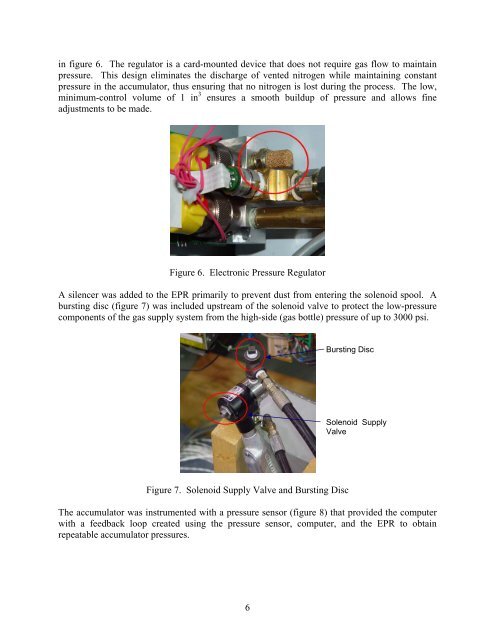Development of a Component Head Injury Criteria (HIC ... - FAA
Development of a Component Head Injury Criteria (HIC ... - FAA
Development of a Component Head Injury Criteria (HIC ... - FAA
You also want an ePaper? Increase the reach of your titles
YUMPU automatically turns print PDFs into web optimized ePapers that Google loves.
in figure 6. The regulator is a card-mounted device that does not require gas flow to maintain<br />
pressure. This design eliminates the discharge <strong>of</strong> vented nitrogen while maintaining constant<br />
pressure in the accumulator, thus ensuring that no nitrogen is lost during the process. The low,<br />
minimum-control volume <strong>of</strong> 1 in 3 ensures a smooth buildup <strong>of</strong> pressure and allows fine<br />
adjustments to be made.<br />
Figure 6. Electronic Pressure Regulator<br />
A silencer was added to the EPR primarily to prevent dust from entering the solenoid spool. A<br />
bursting disc (figure 7) was included upstream <strong>of</strong> the solenoid valve to protect the low-pressure<br />
components <strong>of</strong> the gas supply system from the high-side (gas bottle) pressure <strong>of</strong> up to 3000 psi.<br />
Bursting Disc<br />
Solenoid Supply<br />
Valve<br />
Figure 7. Solenoid Supply Valve and Bursting Disc<br />
The accumulator was instrumented with a pressure sensor (figure 8) that provided the computer<br />
with a feedback loop created using the pressure sensor, computer, and the EPR to obtain<br />
repeatable accumulator pressures.<br />
6

















